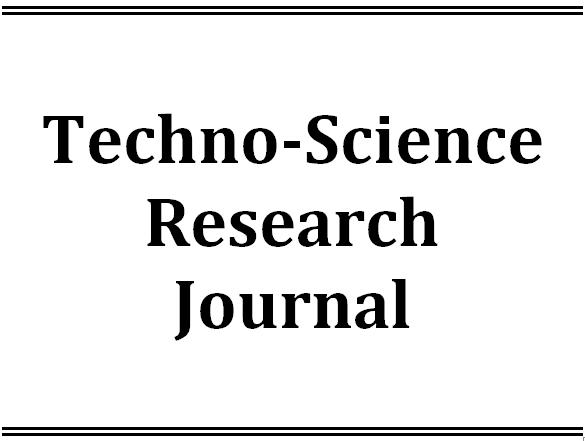Latest Issue
Empowering Education with Online Khmer Handwritten Text Recognition for Teaching and Learning Assistance
Published: August 30,2025Undergraduate Student Dropout Prediction with Class Balancing Techniques
Published: August 30,2025Status of Seawater Quality at Koh Rong Island, Sihanoukville, Cambodia
Published: August 30,2025Low-Complexity Detection of Primary Synchronization Signal for 5G New Radio Terrestrial Cellular System
Published: August 30,2025Word Spotting on Khmer Printed Documents
Published: August 30,2025Tuning Hyperparameters Learning Rate and Gamma in Gym Environment Inverted Pendulum
Published: August 30,2025Examining Passenger Loyalty in Phnom Penh Public Bus System: A Structural Equation Modelling Approach
Published: August 30,2025Prediction on Load model for future load profile of Electric Vehicle charging demand in Phnom Penh
Published: August 30,2025Economic Study on Integrating PV-DG with Grid-Tie: Case Study in Cambodia
Published: August 30,2025Effect of microwave pretreatment method on essential oil extraction on key lime peel (Citrus × aurantiifolia)
-
1. Faculty of Food and Chemical Engineering, Institute of Technology of Cambodia, Russian Federation Blvd., P.O. Box 86, Phnom Penh, Cambodia
Received: July 09,2023 / Revised: January 10,2024 / / Accepted: June 04,2024 / Available online: April 30,2025
The peel of key lime is regarded as a byproduct that contains a substantial amount of bioactive components, including essential oil. The extraction of essential oils from key lime peel typically involves conventional techniques such as hydro-distillation or solvent extraction, which are known for their time-intensive and energy-intensive. The employing of microwave pretreatment has emerged as a conventional approach in the extraction of essential oils from various plant materials. The objective of this study was to investigate the optimization of the effect of microwave pretreatment method on essential oil of key lime peel. Response surface methodology based on Face-Centered CCD was applied to optimize the parameters for microwave pretreatment such as microwave power (600 – 800 W), irradiation time (2 – 5 min) and solid-to-solvent ratio (SSR) (1:0 – 1:2 w/v) . The essential oil extracts at optimized microwave pretreatment conditions were compared with hydro-distillation. The optimized condition of microwave pretreatment was 1000 W microwave power, 2 min irradiation time and SSR of 1:0 w/v. The analysis of ANOVA and three-dimensional response surface revealed the primary factor of microwave pretreatment conditions that affects the yield of essential oil was the SSR, follow up by irradiation time and microwave power. The essential oil was subjected to analysis using GC-MS, revealing the presence of 39 compounds in both the essential oils obtained from pretreatment and non-pretreatment using microwave. No discernible disparities were observed in the composition of essential oil under all of those conditions.

